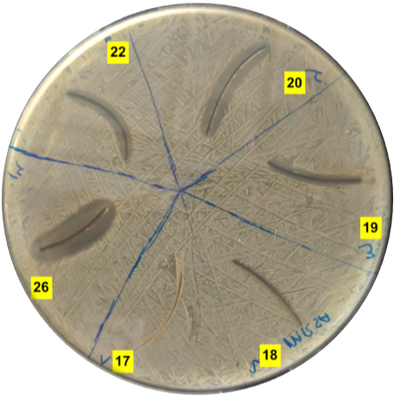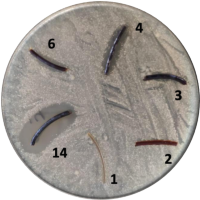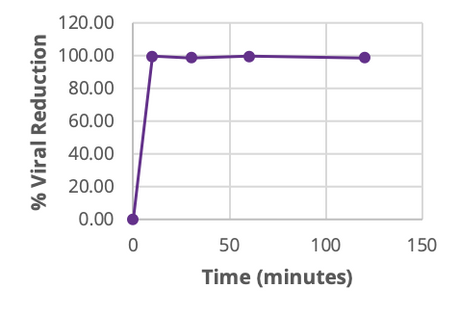Iodine is an essential mineral nutrient that is needed by the body for normal healthy growth. Iodine is essential in the synthesis of thyroid hormones. The body is not able to make iodine, but it is taken into the body through ones’ diet.Common sources of dietary iodine are: dairy products, seafood, iodized salt and fortified breads. Deficiency of iodine can lead to goiter and intellectual disability (mental retardation). Iodine deficiency effects more than 2 billion people worldwide and is the leading preventable cause of intellectual disability.
Quite amazingly, as well as being an essential mineral nutrient, iodine is also a potent antimicrobial and antiviral compound. Almost everyone has used betadine at one point in their life to clean a wound or disinfect the skin prior to an injection. Betadine has been used in the hospital setting for almost 70 years, the product can be easily purchased over the counter in almost any supermarket or pharmacy and is a trusted and effective product in almost every family’s first aid box. The active ingredient in betadine is povidone-iodine, a water-soluble, polymer-iodine complex that shows broad spectrum antiviral and antibacterial properties, which is safe for human and animal use and has never shown the development of bacterial or viral resistance.
X-Infex B.V. has discovered a way to incorporate the desirable antiviral and antibacterial properties of betadine in regular, everyday plastics. Plastics that are the basis for a plethora of medical devices, consumer goods and industrial articles. There is a huge need for antiviral and antibacterial plastics to reduce and prevent the spread of pathogenic organisms and infections. These pathogenic organisms disproportionally affect our most vulnerable population: the very young, sick, immunocompromised and elderly. Whether it’s an unexpected hospital acquired MRSA infection, or an E. coli infection due to a urinary catheter administered in an assisted living home, or ventilator-associated pneumonia in a premature baby, or an air-borne virus infection in an office building; the physical surroundings and objects we are in contact with are often the source or eventual cause of countless infections that can have an immense impact on one’s well-being, contribute to staggering healthcare costs and effect global economies (e.g. the COVID-19 pandemic).
The X-Infex technology can be incorporated in a vast array of product forms which include: fibers, tubing, coatings, sheets and foams. The resultant X-Infex materials show long-term biocidal and antiviral properties that can help reduce the spread of infections. Because iodine is non-selective in its germicidal activity, the resultant X-Infex materials show broad spectrum biocidal activity against bacteria, fungi, molds and viruses while being safe and non-irritating.
X-Infex cooperates with the Medical Microbiology Department at the University Medical Center Groningen (UMCG) and The Imaging Pathogens for Knowledge Translation (ImPaKT) Facility at Western University Ontario for the biocidal and antiviral testing of our materials. Two world-renowned independent research and testing facilities that confirm the X-Infex technology works.

Antibiotic-resistant microorganisms
X-Infex fibers showing distinct clearing zones representing the inhibition of Methicillin-resistant Staphylococcus aureus (MRSA). MRSA is an antimicrobial resistant strain of bacteria that thrives in the presence of penicillin-like antibiotics. MRSA is an important source of bloodstream and urinary tract Healthcare Acquired Infections (HAI’s). In Europe alone, MRSA is responsible for additional hospital costs of €380 million per year and is a significant contributor to more than 30,000 annual deaths due to antibiotic-resistant infections.

Opportunistic pathogenic microorganisms
X-Infex fibers showing distinct clearing zones representing the inhibition of Candida albicans. C. albicans is an opportunistic pathogenic yeast. The fungal species in commonly found in the gut flora, but can become pathogenic in immunocompromised individuals and can cause the human infection candidiasis. Systemic candidiasis is the most common fungal infection among hospitalized people in high income countries. Systemic candidiasis results in death of 45-50% of the critically ill people it infects. Candidemia (infection in the blood) results in a mortality rate of 19-30%.
Top video: Regular filter foam worn for 3 hours and then plated on nutrient agar to observe microbial loading of respiratory microorganisms on foam surface.
Bottom video: X-Infex foam worn for 3 hours and then plated on nutrient agar to observe microbial loading of respiratory microorganisms on foam surface.

SARS-CoV-2 Inactivation
Active SARS-CoV-2 virus is reduced by 99.9% when in contact with X-Infex foams for 10 minutes. SARS-CoV-2 is the virus that can cause the disease COVID-19. The virus is spread through human-to-human contact via respiratory droplets or aerosols. The resultant COVID-19 pandemic has resulted in more than 2.5 million deaths and a projected decrease in the global GDP of 4.5%.
Due to the fact that the technology is straight-forward and economical to implement, it is expected that the number of applications and products that can benefit from the X-Infex technology are great. X-Infex is working with a number of interested partners and is focused on implementing the technology in the areas of: medical devices, wound care and air filters, specifically with respect to face masks and air handling.
We are always looking for like-minded people that share our vision, morals and ethical standards. We seek to come up with innovative, biocidal solutions that tackle global problems that everyone can benefit from. We are looking to create win-win situations.
©2021, X-Infex B.V.
All rights reserved.